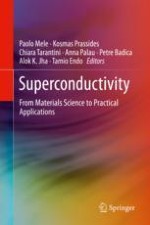This book provides readers with a comprehensive overview of the science of superconducting materials. It serves as a fundamental information source on the actual techniques and methodologies involved in superconducting materials growth, characterization and processing. This book includes coverage of several categories of medium and high-temperature superconducting materials: cuprate oxides, borides, and iron-based chalcogenides and pnictides.
Provides a single-source reference on superconducting materials growth, characterization and processing;Bridges the gap between materials science and applications of superconductors;Discusses several categories of superconducting materials such as cuprate oxides, borides, and iron-based chalcogenides and pnictides;Covers synthesis, characterization, and processing of superconducting materials, as well as the nanoengineering approach to tailor the properties of the used materials at the nanoscale level.
